What do you know about the UK's jellyfish?
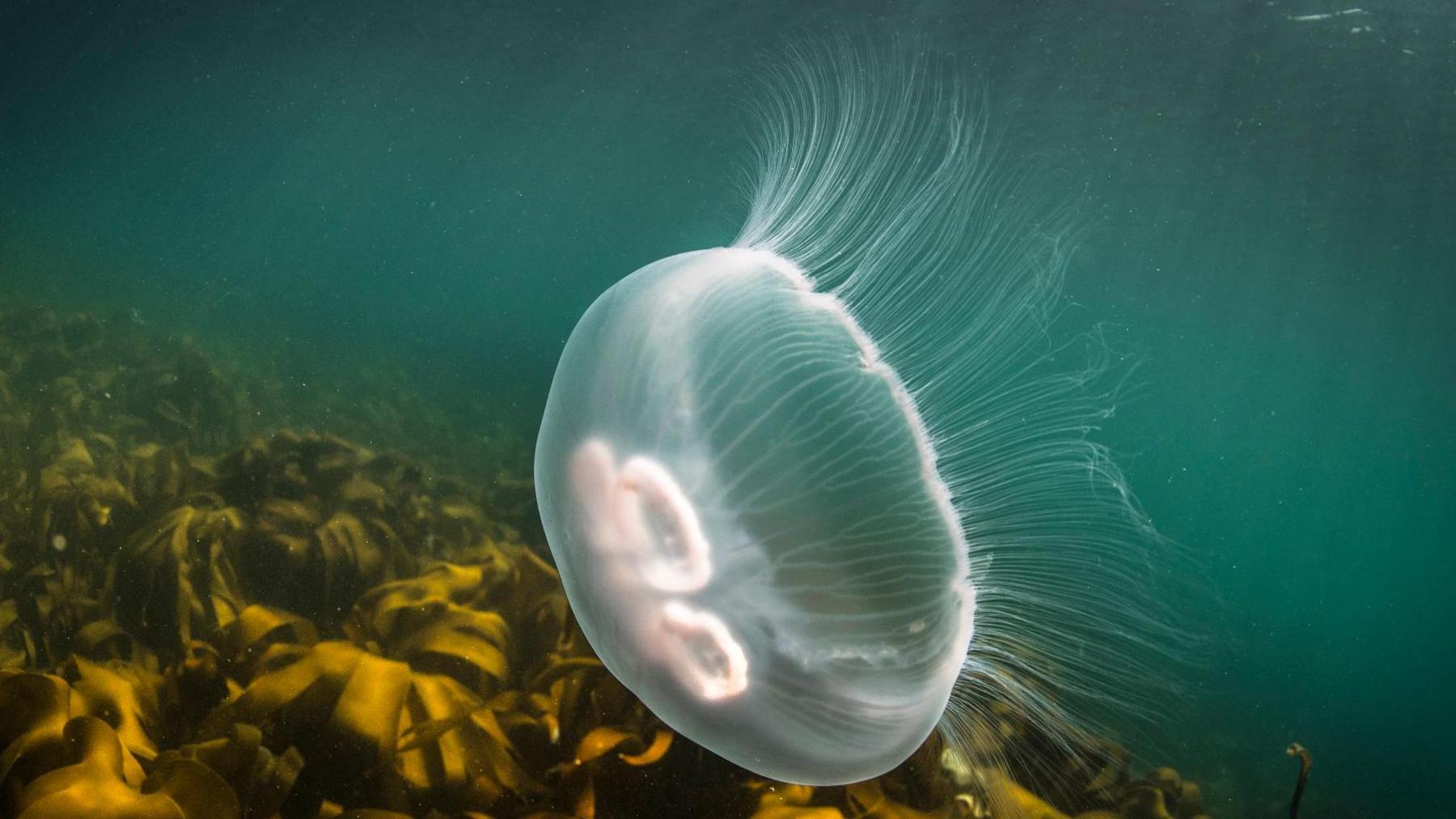
Experts say there are more jellyfish in UK seas this summer
- Published
If you've been to the beach this summer, you might have seen more jellyfish than usual.
That's because an unusually high number of jellyfish have made their way to the seaside in the last year, according to experts from the Marine Conservation Society.
Experts think that warmer seas - which help jellyfish grow and reproduce - could mean more and more of the sea-jellies are arriving.
Anna Bunney, Citizen Science Programme Manager at the Marine Conservation Society says: “Data from our volunteers who have taken part in our Wildlife Sightings programme has shown that there is a 32% increase in jellyfish sightings over the past year.
"Warmer sea temperatures, more storms and changing ocean conditions are likely driving these increases."
Let us know in the comments if you have ever seen a jellyfish, and scroll down to see which species should be on your jellyfish-bingo list this summer,
More fantastic jellyfish facts
Jellyfish have 'memories' - despite having no brain!
- Published28 September 2023
Celebrate World Jellyfish Day with these fun facts
- Published3 November 2023
Have you ever seen a 505-million-year-old fossil?
- Published4 August 2023
Moon jellyfish
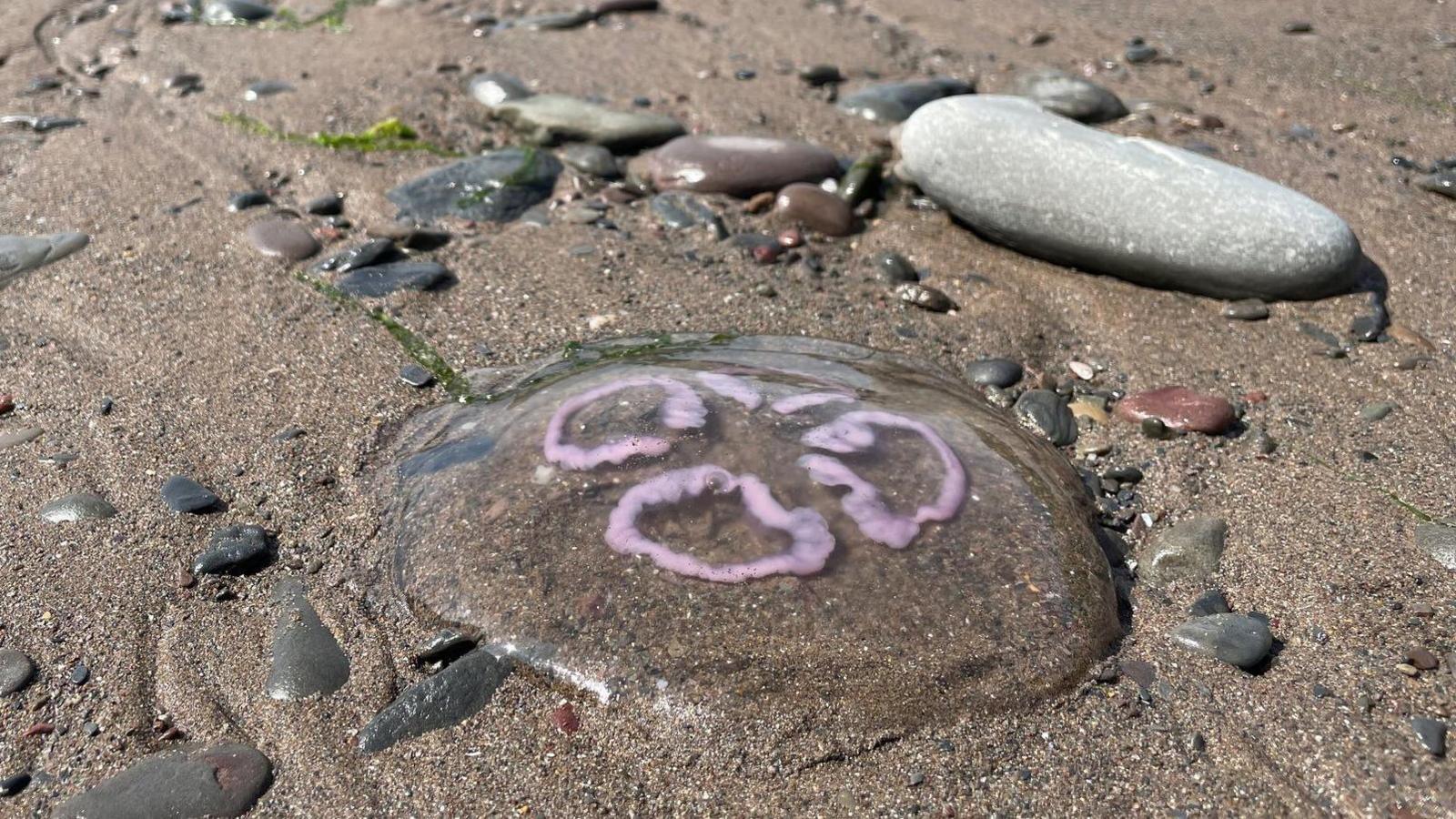
You'll often find moon jellyfish washed up on beaches, like this one spotted in North Devon.
This is the jellyfish you're most likely to spot If you're heading to the beach this summer. But don't worry - it doesn't tend to sting humans.
Moon jellyfish can grow up to 40cm wide - about the size of a plate - and have four purply-pink rings on their 'bell', which is the umbrella-shaped body of the jellyfish.
These jellyfish get their name from their translucent, moon-like bell, but that's not the only cosmic fact about them.
In 1991, NASA sent thousands of them all the way to space to study how gravity would impact them!
Compass jellyfish
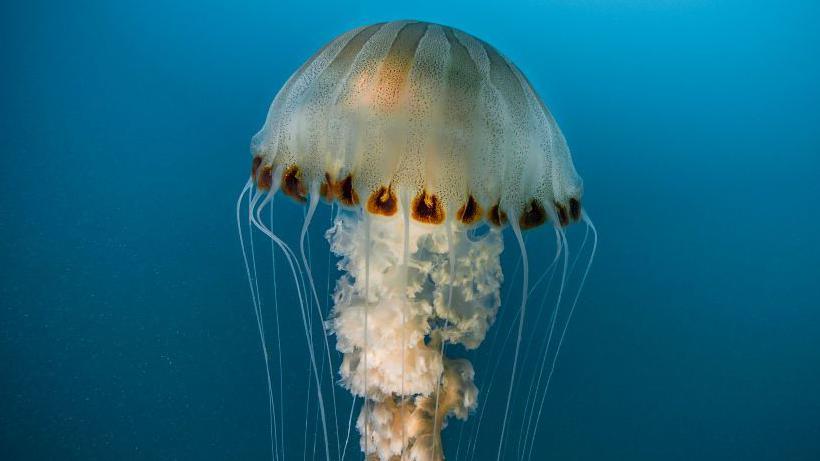
Compass jellyfish are named after their compass-like appearance, but be careful - they pack a nasty sting!
It's not hard to guess where this jellyfish get's it's name!
That's right - it's because it looks just like a compass, with lots of brown V-shaped markings that run down it's top.
Amazingly, this species of sea-jelly change from male to female as they get older!
It's a carnivore too, eating small fish, crabs and even other jellyfish.
This jellyfish is very common, making up more than a third (36%) of sightings last year, according to the Marine Conservation Society.
But be careful, while it might look super-cool, those tentacles pack a nasty sting - so it's best admired from a safe distance if you find one!
Lion's mane jellyfish

Lions mane jellyfish can sting even when washed ashore, like this one spotted on a Northumberland beach.
If you thought the compass jellyfish had the coolest name - think again!
Lion's mane jellyfish are the longest species of jellyfish in the world, with hundreds of thick, hair-like tentacles that make it look a bit like a.... lion's mane.
The largest one ever found was an enormous 36.6m long - that's longer than an swimming pool, or a blue whale!
But watch out, while they look as beautiful as a lion, those tentacles have all the bite of one too.
This jellyfish's tentacles can sting you even if they're no longer attached, so be sure not to touch one if you see it on the shore.
Barrel jellyfish
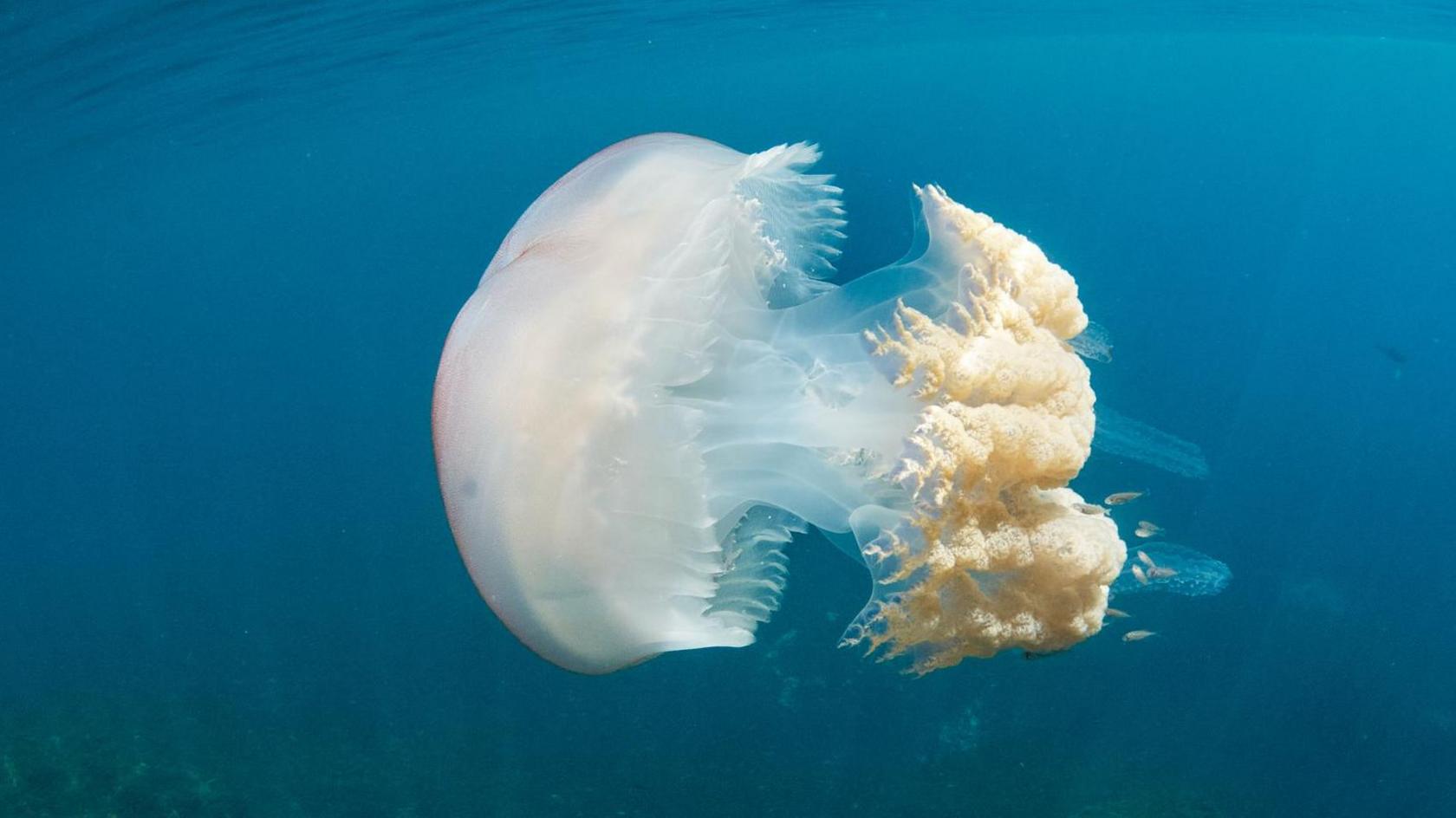
Barrell jellyfish are the largest jellyfish found in the UK.
Barrell jellyfish are the giants of the jellyfish world, weighing up to 25kg - the same weight as a medium-sized dog!
Sometimes called a dustbin lid jellyfish because of their huge 1m wide top, these gigantic jellies are the UK's largest jellyfish.
They can be white, pale pink, blue or yellow, and are fringed with purple markings.
These heavyweight sea-jellies are the favourite meal of leatherback turtles, who can eat from 10 to 30 every single day!
Mauve stinger jellyfish
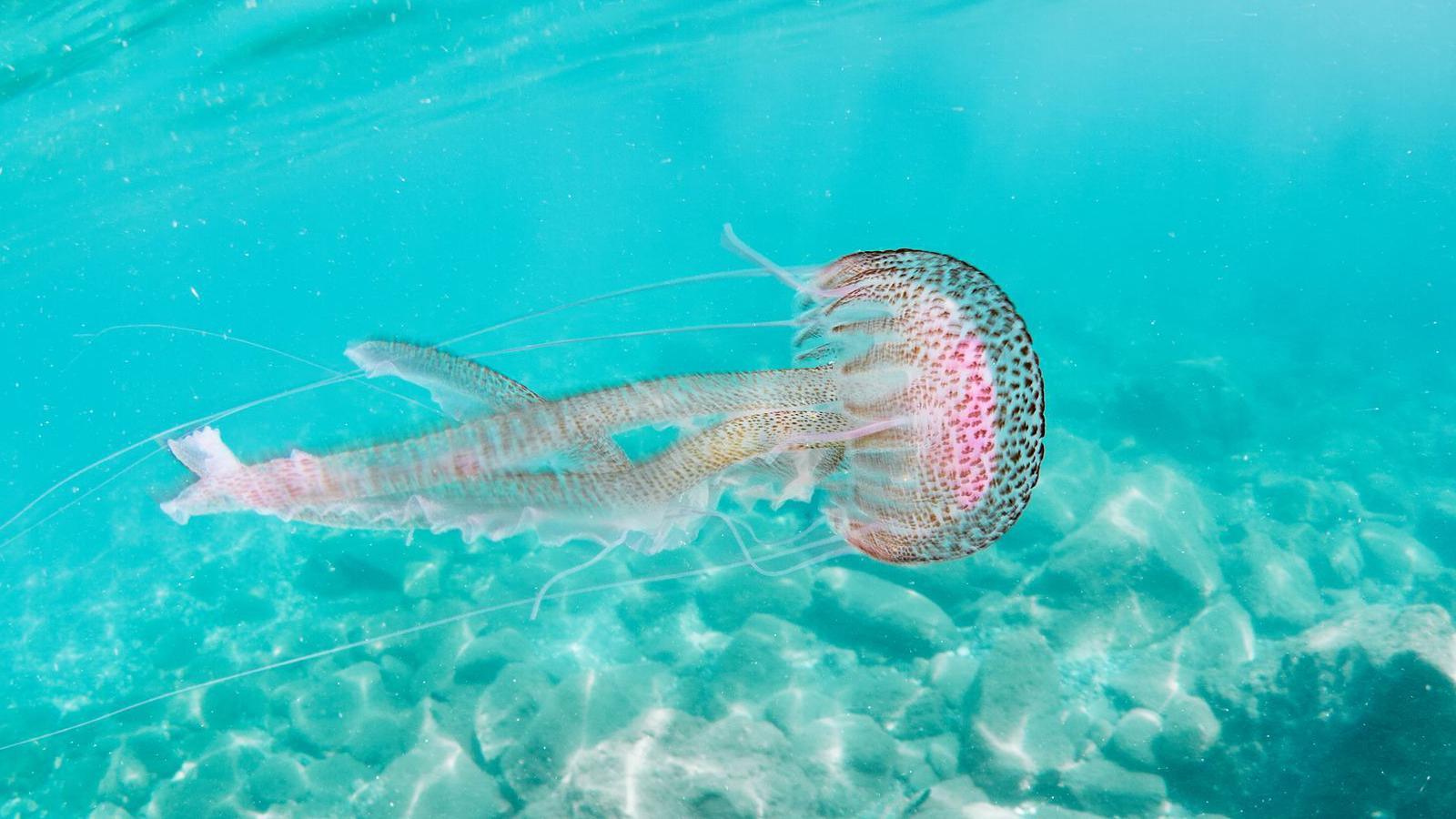
Mauve stinger's are bioluminescent - they glow in the dark!
Mauve stingers might be small, but they're beautiful.
These blue-pink jellies are only 10cm wide, which is only the size of a cookie! But don't be fooled - those tentacles have a nasty sting.
They are also 'bio-luminescent', which means that when they are disturbed at night, they glow in the dark.
Their scientific name is also 'Pelagia nocticula', which means "night-light of the sea".
